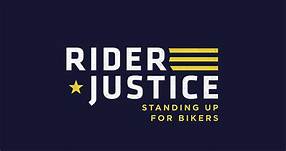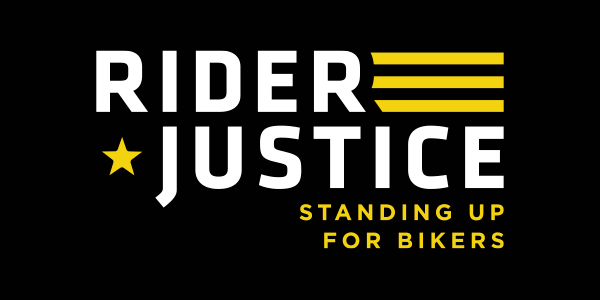Why is it important to include Un-Insured/Under-Insured Motorist Coverage in your policy?
By Stormy
Considering being in a motorcycle accident in July of this year, I discovered that I didn’t have UM/UIM coverage included in my motorcycle policy. This means that because the at-fault driver didn’t have enough coverage on their policy, I might be stuck with paying my medical bills which as of today is $33,000.00.
UIM Critical for Bikers
Eli Ohlhausen of The O’Sullivan Law Firm stated that since bikers are more vulnerable because they are out in the open and not protected like they would be in a car or truck, they need UIM coverage.

He also said, “I have seen a lot of cases where a bike rider goes to the ER and, even though the injuries are not severe, a ‘Level 1 Trauma’ is activated. What this means is that the entire ER is put on alert and the price of treatment skyrockets. I have a client right now who had a low-speed tip over resulting in a bruised rib and a sprained ankle – the ER initiated a level 1 Trauma and his bill for the 4 hours visit was over $40,000.00. If the at-fault driver had the minimum coverage allowed in Colorado ($25k), our guy would be on the hook for over $15k. Even worse, if the driver was uninsured or fled the scene, the entire bill would be the rider’s responsibility. While it is true that health insurance may pick up most of the bills, there are still co-pays and deductibles, and it is manifestly unjust to have to pay these when the accident was not your fault.”
Eli also informed me about how cases where there are significant injuries are more concerning. He explained that he has seen clients with hundreds of thousands of dollars in medical bills and most of the time, the at-fault driver has no assets and/or has no significant income, so suing is not an option. With that said, if you don’t have UIM in cases like this, the rider may get a few thousand dollars, which quickly gets eaten up by his or her future care.
Colorado Statutes
Wade H Eldridge PC, also a personal injury attorney here in Denver, provided me with the Colorado Revised Statutes Title 10 Insurance Section 10-4-609.

Colorado law (10-4-609 CRS) provides that an insured is entitled to UM coverage in the same amount as the liability coverage. Aetna Casualty & Surety Co. v. McMichael, 906 P.2d 92 (Colo. 1995), affirming McMichael v. Aetna Insurance Co., 878 P.2d 61 (Colo. App. 1994). “[u]nder the plain meaning of section 10-4-609(1), insurers must provide UM/UIM coverage for all individuals covered under the liability provision of the policy unless the named insured refuses such coverage in writing.”
Eldridge claimed, “Everyone has UM/UIM in the same amount as their liability coverage, UNLESS UM/UIM has been waived. NEVER EVER waive UM/UIM.”
He continued, “If a driver has more than one policy, it “may” be possible to collect UM/UIM benefits on each policy. This is called “stacking.”
If you have UM/UIM on one vehicle, you may make a claim under that coverage even if you were occupying a different vehicle at the time of the collision. DeHerrera v. Sentry Insurance Co., 30 P.3d 167 (Colo. 2001).
What I Changed
After talking and learning from Wade and Eli, I have increased my UIM to: Uninsured/Underinsured Motorist Bodily Injury: $250,000 each person/$500,000 each accident on my motorcycle policy. I did have UM/UIM on my car insurance policy, so I am crossing fingers that my car insurance company will consider the DeHerrera v. Sentry Insurance case and honor it.
There is another interesting point that astonished me. If your medical health insurance is self-funded, you must pay them back if you receive a settlement. Many people injured in motorcycle accidents get blindsided when they learn that they must repay their insurance carriers. Their usual question is “why do I have to pay them back when I pay premiums every month?”
When a settlement or judgement has been awarded, an example of $500,000, not all that goes to yourself. Personal injury attorneys work on a contingency basis, so a portion of that goes to your attorney. That can range from 25% to 40% AFTER expenses. Using an average of 33%, that is $165,000 to your attorney, and now one is down to $335,000. Next is your Self-Funded Insurance Plan, using the percentage of 33%, and based on what your total medical expenses are and how hard your attorney works for you to negotiate that percentage down, that is another high-end potential of $165,000. Now your settlement or judgment is down to $170,000! Quite a substantial difference from thinking you are getting $500,000 to potentially only receiving $170,000 from your injury accident.
Set High Limits
While setting up the insurance limits for your bike, you should always have a high UI/UIM limits if you ride. Next thing one should always check is your health insurance plan as to if it is a Fully Insured Plan or a Self-Funded Insured Plan. If your health insurance is a Self-Funded Insurance Plan, like mine is, one needs to know that your Self-Funded medical insurance will take a portion of any injury insurance settlement awarded to pay for a portion of your medical expenses. In short, you must pay back your medical insurance company for your medical expenses with your settlement or judgement. If you don’t pay it back, it would be like you were doubly compensated for your injuries.






